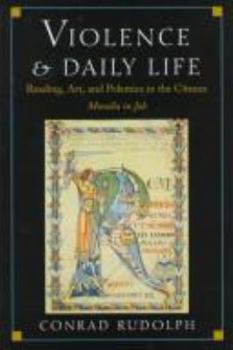Violence and Daily Life: Reading, Art, and Polemics in the Cîteaux Moralia in Job
The twelfth-century manuscript of Gregory the Great's Moralia in Job , lavishly written and illuminated at the Cistercian monastery of C teaux in 1111, contains images of seemingly gratuitous violence and daily life that are famous but have a significance that has eluded most modern viewers. These images range anywhere from monstrous beasts that devour and hack at each other with swords to monks harvesting grain and felling trees. They have been called by some scholars the products of "unbridled, often irrational fantasy," entirely independent of the text and of any specific meaning. In this book, Conrad Rudolph argues that beyond the face value of these illuminations, there lies an undercurrent of thematic consistency. Like obscure events from Scripture, he maintains, the images may lead to another level of meaning yet to be discovered. Rudolph focuses on the ways spirituality and politics operate in the artistic process that produced this particular manuscript. By exploring these interactions, we can understand how the form of spirituality embodied in this manuscript legitimized a very intimate attitude on the part of the artist toward the subject. The images are in fact the product of Gregory's demand that one "become" what one reads: some reflect the ideal monk crafting a holy place out of the wilderness, others the Cistercian notion of spiritual advancement as a violent struggle. In this way, the C teaux Moralia in Job conveys an exuberance and creativity rarely found in manuscript illumination before or since.
Format:Hardcover
Language:English
ISBN:0691026734
ISBN13:9780691026732
Release Date:June 1997
Publisher:Princeton University Press
Length:196 Pages
Weight:1.35 lbs.
Dimensions:0.8" x 7.8" x 10.0"
Customer Reviews
0 rating





